J-U-B collaborated with the Granger-Hunter Improvement District (GHID) and Nelson Brothers Construction Company to design and construct the Rushton Groundwater Treatment Plant (GWTP) to improve the quality of the local drinking water. The project, funded by the Department of Environmental Quality: Division of Drinking Water, uses existing facilities, constructed new ones, and prioritizes water conservation through water-wise landscaping.
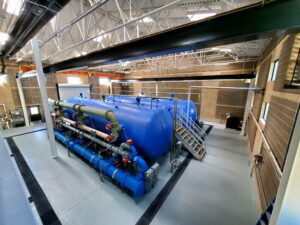
The GWTP treats water from three wells enhancing water quality through filtration and disinfection, by removing iron, manganese, and ammonia. The new plant will improve the quality, overall aesthetics, and taste of the drinking water for GHID customers. It also adds an element of drought resiliency. Where many communities must rely heavily on importing water from other sources, which can prove challenging in drought years, GHID provides a quality, local supply of water to its local customers.
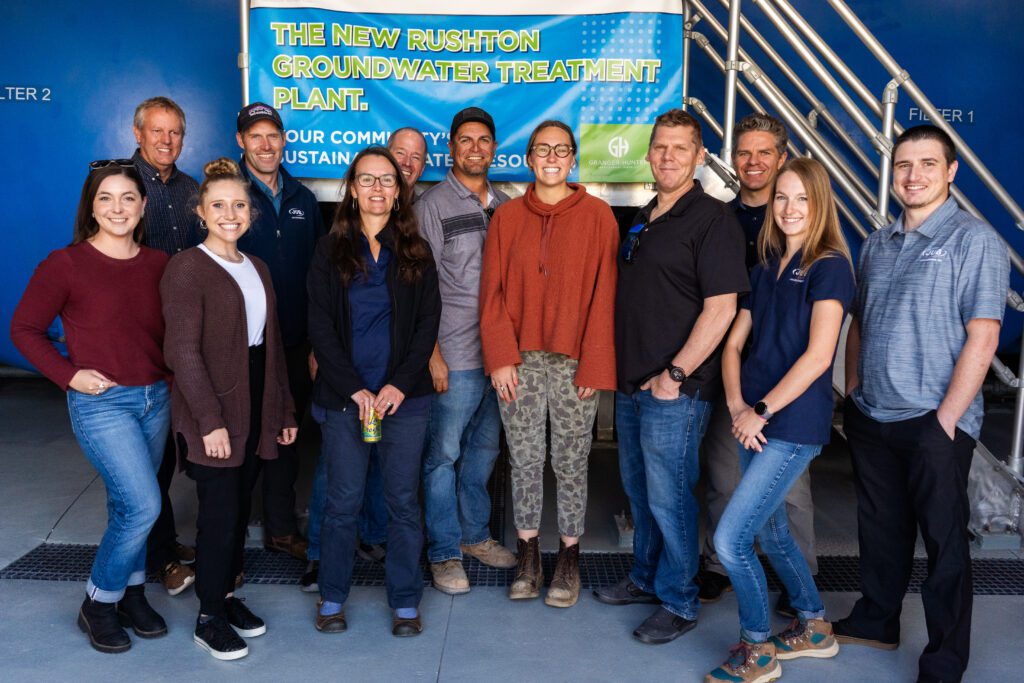
From L to R: Jennifer Fowler, David Strong, Audrey Gowans, Jonathan Farrell, Christina Osborn, Brandon
Nielsen, Matt Gore, Whitney Davidson, Tyler Jepsen, Jordan Pugmire, Alea Nielson, Tyler Roberts
The early stages of the project included planning to decide how to address the water quality issues and how to treat each well in the most cost-effective manner. A regional treatment approach was determined to be the most cost-effective solution and the Rushton GWTP was identified as the first of a few water treatment plant projects. During the early stages, the team also determined the desired size and level of flexibility (redundancy, expandable, etc.) that the District was interested in pursuing. After pilot and taste-testing studies, J-U-B launched into early procurement of the filtration equipment using an evaluated bid. This allowed the team to base the design off of a specific supplier’s equipment, which was Kurita/Tonka. J-U-B embarked on a typical design-bid build process to construct the facility. Challenges during construction, such as an unexpected canal closure, led to adaptations in the stormwater system design.
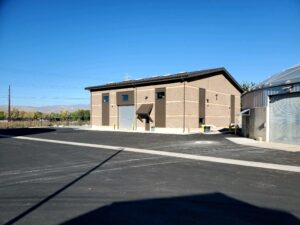
In summary, the project included the following:
Collaboration extended to other agencies, including the Utah Division of Drinking Water, West Valley City, and Salt Lake County. The Langdon Group assisted with outreach to the nearby community. GHID chose J-U-B again to partner with them on the Anderson GWTP project—the latest treatment plant project the District is now undertaking. We are now their trusted advisor having worked on 7+ projects in the last few years with them. These projects have ranged from landscaping, waterlines, a booster pump station, and the planning through construction on two water treatment plants.
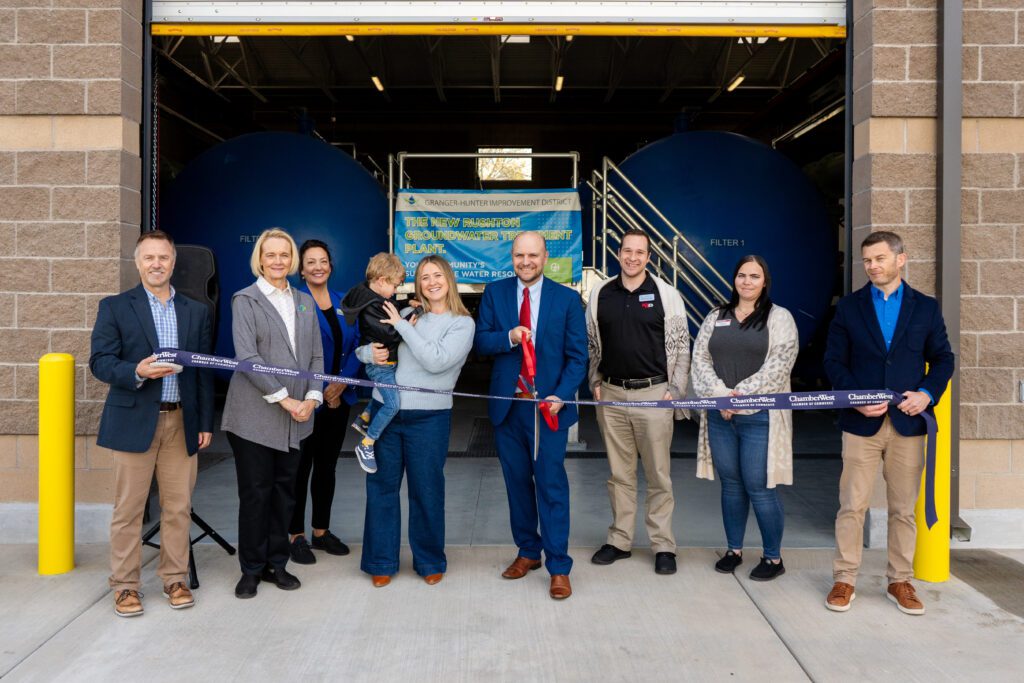
GHID celebrated the grand opening of the new WTP, with assistance from The Langdon Group, by hosting a ribbon cutting and community open house on Oct. 24, 2023. Visitors had the opportunity to tour the new plant, participate in a “Truck-or-Treat,” observe water treatment demonstrations, and sign up for GHID’s water usage portal. The GHID mascot “Drip” also made an appearance as did numerous GHID trucks—a vactor truck, a camera truck, a dump truck and a backhoe.
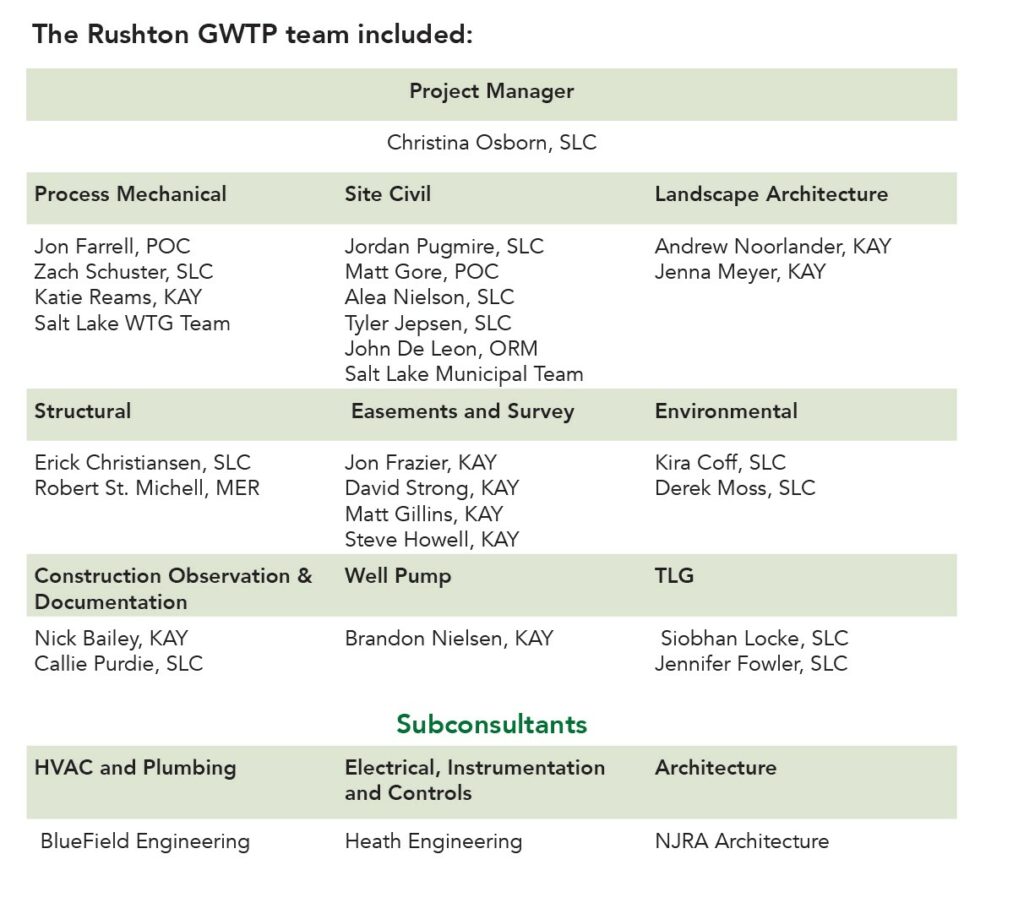
© 2024 J-U-B Engineers, Inc. All Rights Reserved. Privacy | Electronic Documents/Data License